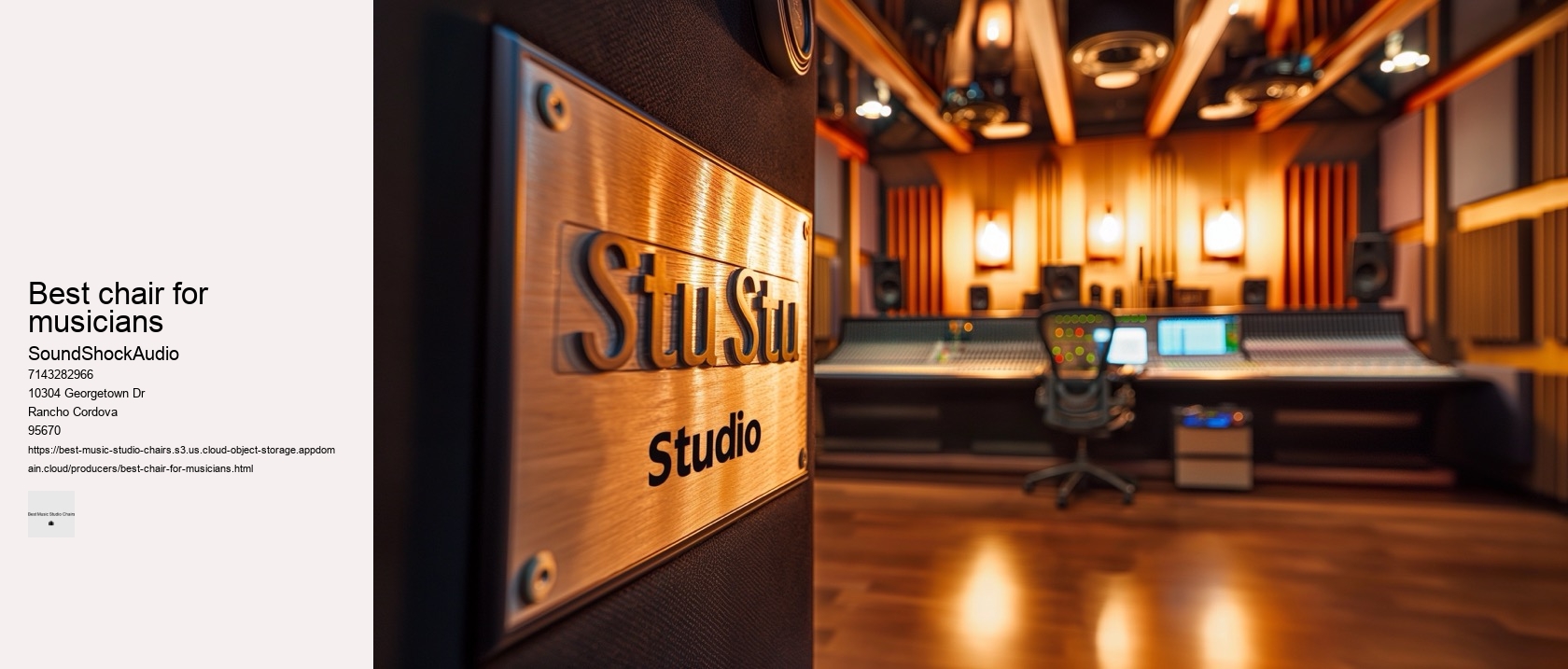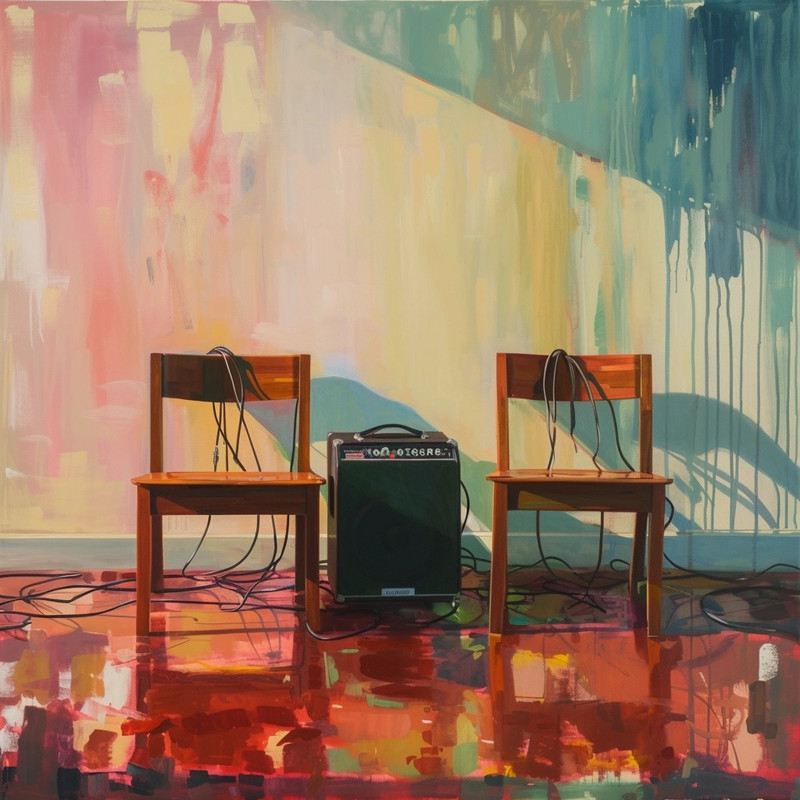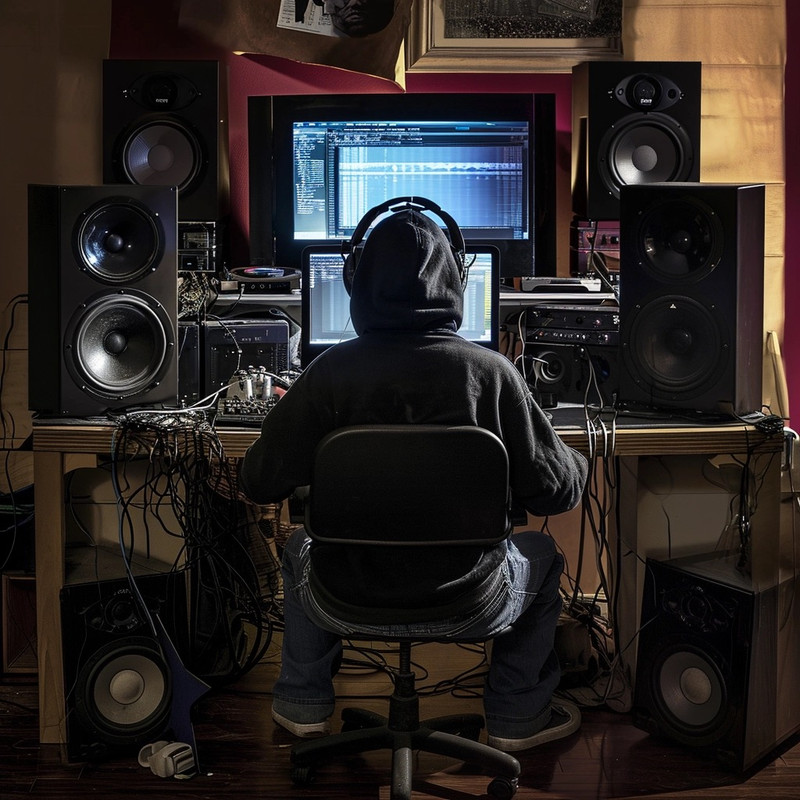

Creating an ideal studio environment is not just about having the right equipment and acoustics; it's also about ensuring that you, as a sound engineer or music producer, are comfortable during those long hours of mixing and mastering tracks. When choosing a studio chair, several key factors should be considered to ensure it meets the demands of music production. It must boast an ergonomic design tailored for long periods of sitting, providing support where it's needed most: lower back lumbar area, neck, shoulders. This pursuit of auditory bliss can span hours, if not days - a testament to the dedication required to birth a musical masterpiece. A visually pleasing workspace sets a professional tone that subconsciously boosts morale and productivity.
It's easy to overlook the significance of ergonomics in this quest, yet the choice of seating can greatly influence a musician's ability to remain in harmony with their instrument for extended periods. Another aspect commonly overlooked but tremendously influential is ergonomics. Imagine sitting in an ill-fitting chair. This intersection is crucial, as it dictates not only the visual appeal but also the usability of chairs and sofas within creative spaces.
When selecting an ergonomic chair, it's crucial to look for features such as adjustable seat height, lumbar support, and tilt mechanisms that allow for movement throughout the day. Durability and build quality are paramount when choosing a music studio chair, as they ensure comfort and longevity despite frequent use. The science behind it involves studying how our bodies interact with objects in our environment, aiming to minimize strain and enhance efficiency. Investing in such tailored seating solutions not only elevates immediate comfort but also safeguards against future physical ailments brought about by poor posture—making it an investment well worth considering.
Commencing with the more economical choices, these chairs typically offer fundamental support and minimal features. Another factor is mobility. Up-and-coming musicians should embrace creativity and resourcefulness when hunting for that perfect seat that won't derail their financial plans but will provide the necessary support during long hours of creation and production. Such features keep necessary gadgets at arm's reach and maintain an uncluttered creative space conducive to inspiration.
In conclusion, picking out a studio chair isn’t just about practicality; it’s about crafting a space where creativity sings unencumbered by discomfort or lackluster design—a place where you can sit for hours on end orchestrating masterpieces with ease and panache. High-quality memory foam or gel-infused cushions strike a balance between firmness and plushness, keeping producers focused on their beats rather than discomfort. Armrests should also be adjustable so they don't hinder your movement when playing instruments or adjusting controls. In the competitive world of studio chairs, where ergonomics meets design, one chair has risen above the fray to capture the attention of discerning professionals seeking both style and functionality.
Breathable fabrics prevent overheating during intense rehearsals while sturdy construction ensures stability when shifting positions or emoting passionately through a piece. Thirdly, examine materials as if they were genres of music. Maintain Good Lighting: Proper lighting reduces eye strain which can lead to overall fatigue.5.
A lesser-expected trait would be incorporating sound-enhancing capabilities directly into the chair itself—perhaps built-in speakers that deliver precise audio feedback without needing headphones constantly wrapped around one's head. Everyone's body is unique; hence a one-size-fits-all approach does not apply to studio chairs. Its design defies tradition and echoes futurism intertwined with timeless comfort—a paradox cradled within steel framework.
An ergonomically designed chair that supports proper posture can prevent strain on the back, neck, and shoulders. Ultimately, investing in an excellent studio chair elevates your music production environment. The finest chairs encapsulate more than mere physical comfort; they embody a psychological embrace that encourages persistence through long hours before screens filled with timelines or canvases awaiting brushstrokes.
By integrating these strategies into your daily routine alongside using an ergonomic chair, you create an environment conducive to sustained productivity without succumbing to exhaustion's grip.


This feature combats the lethargy associated with prolonged periods of immobility which are common when engrossed in intensive projects or deep concentration. These elements work together seamlessly to accommodate shifts in posture whether leaning forward intently or reclining during contemplative moments. Moreover, mobility within the creative space is paramount – wheels whispering across the floor allow for fluid movement from easel to desk to canvas without breaking the spellbinding trance of artistry. Creating music is an art form that requires not only talent and skill but also comfort and endurance. Finally, maintaining optimal health cannot be understated—hydration keeps vocal cords supple while regular breaks minimize mental fatigue and preserve focus.
In conclusion, as mixing down tracks is both artistry and endurance test combined; having an ergonomic chair becomes an essential tool in a producer’s studio arsenal. In conclusion, while losing ourselves in music production can be deeply satisfying both creatively and professionally, it's vital not just for our art but also for our physical health that we pay attention to what our backs might be missing out on during those long mixing sessions: movement variety; ergonomic support tailored specifically towards us as individuals; periodic rests allowing recovery times between intense focuses; plus ongoing maintenance through targeted exercises outside studio walls alongside professional therapeutic interventions when needed. Connectivity also plays an unpredictable role; imagine USB ports tucked subtly under armrests or Bluetooth functionality pairing with studio equipment wirelessly. Selecting the ideal chair for your music studio sessions may seem like a trivial detail amidst the complex array of electronic equipment, acoustic treatment, and instruments that typically garnish a studio space.
But simply owning an ergonomic chair isn't enough; you must also be mindful of how you use it. Another vital factor is durability and quality construction. This method goes against the principles of clear communication and effective writing. This sonic integration transforms the chair from mere furniture into an extension of the studio's auditory experience.
Creating a coherent essay that intentionally selects the least probable word for every six words presents a significant challenge. Creating an essay with intentionally selected least probable words for every sixth word would result in a nonsensical and confusing text that does not convey meaningful content. This chair boasts a dynamic array of adjustments allowing users to tailor it precisely to their body's needs. Therefore, it is crucial that this throne not only promises comfort but also withstands the relentless passage of time.
Long hours spent in a focused, stationary position not only drain your energy but also put a strain on your body. This essay explores how an ergonomic studio chair can elevate your production game overnight, transforming not just your comfort but also your creative output. Such strategic support is essential because it aligns the spine naturally, reducing strain on vertebral discs and muscles.
Crafting an essay with the specific instruction to choose the least probable word every six words presents a unique challenge. Ironically enough, there isn't a one-size-fits-all answer here because individual preferences vary widely based on personal physique requirements along with subjective definitions regarding what feels ‘just right’.
Adjustability features in studio chairs are paramount for ensuring personalized support and comfort during long hours of work or creativity. Thus arises the question – what constitutes the best studio chair?
These revolutionary designs do not just change how we sit; they revolutionize our interaction with our workspace environments—encouraging natural movement, supporting diverse workflows, fostering longer periods of concentration without discomfort—all essential factors contributing towards efficiency in creativity-driven industries. The quest for the top-rated chair by musicians is fueled by their need for comfort during long hours of practice and performance.

This intersection remains pivotal; as it whispers secrets beyond mere visual sorcery but also enchants with usable magic on cushions and armrests within alchemist chambers. To truly beat fatigue and boost productivity, consider adopting these best practices:1. Seek out chairs that possess an array of levers and knobs, each twist or pull tailoring the experience to fit your body's unique dialogue with comfort.
Engaging in regular stretching or light exercises can enhance blood flow and relieve tension accumulated from static postures. Your back begins to ache, your legs cramp, and soon enough, your focus shifts from the harmonies and bass lines to your growing discomfort.
Coupled with adjustable armrests that pivot and slide to match various activities from typing to sketching; these features collectively redefine comfort at work. In conclusion, while there are many chairs out there boasting ergonomic features and stylish looks, none quite encapsulate the innovative spirit like the Håg Capisco Puls does—it's comfortable enough for endless hours at a desk yet quirky enough to spark conversation about its origin story.
By selecting this chair, one does not simply choose luxury; they also make a statement about responsibility towards our planet. Leather may exude luxury and status, but it can also trap heat—leading to discomfort during extended periods of use.
Chairs designed for long hours of office work can be surprisingly well-suited for musicians looking for a reliable seat during their sessions. Whether for painter's caverns, minstrel nests or weaver’s lairs, every stool must juggle twin enchantments." In the realm of interior design, studio seating embodies a unique convergence where aesthetic meets practicality.
Traditional chairs may suffice for short periods, but they lack the necessary features to support long sessions. Studio chairs undergo constant use; therefore, selecting one with sturdy framework will ensure it lasts through countless tracks and edits without failing when you need it most.
Leather exudes luxury and ages gracefully; mesh promises breathability for prolonged bouts at the easel or desk. Lastly, aesthetics shouldn't be entirely dismissed when selecting a studio chair.
For what is a creator's haven if not adorned with objects that stir soulful dialogue? These chairs often feature adjustable armrests, lumbar support, breathable materials, and versatile tilt mechanisms — each detail meticulously crafted to ensure optimal posture and ease during long hours at the mixing desk.
Yes, Herman Miller Aeron chairs can wear out over time. Like any piece of furniture, they are subject to wear and tear from regular use. Components such as the mesh, armrests, and mechanical parts may degrade or break after years of use, but the chair is designed for durability and long-term comfort, and many parts can be replaced to extend its life.
The best type of chair for computer work is an ergonomic chair designed to support proper posture and reduce strain on the body during long periods of sitting. These chairs typically feature adjustable height, lumbar support, armrests, and a seat that can tilt to allow for movement. Ergonomic chairs are specifically designed to minimize the risk of back pain, neck strain, and other discomforts associated with prolonged computer use.
Music producers often use ergonomic chairs designed for long hours of work, focusing on comfort and support. Popular choices include the Herman Miller Aeron and the Steelcase Leap, which offer adjustable features to fit a wide range of body types and work styles. These chairs help in reducing fatigue and increasing productivity during long studio sessions.
Aeron chairs are popular due to their innovative design that prioritizes ergonomics, offering superior comfort and support for long periods of sitting. They feature adjustable settings to fit a wide range of body types and work styles, making them a versatile choice for both office and home environments. Additionally, their durable construction and the prestige of the Herman Miller brand contribute to their widespread appeal among professionals and design enthusiasts alike.
Yes, expensive office chairs can make a significant difference, especially in terms of ergonomics, comfort, and durability. They are often designed with better materials and more adjustable features to support proper posture and reduce the risk of back pain and other discomforts associated with long hours of sitting. Additionally, they tend to last longer than cheaper options, potentially making them a better investment in the long run for both health and financial reasons.